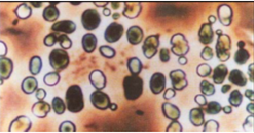Effective Microorganisms
(EM)
What is Effective Microorganisms
Effective Microorganisms (EM) Generally, there are many types of EM and not all the primary microbes are used to produce an EM. Various combinations of these microbes are used to formulate different EM to suit different applications. However, the three general classes of microbes being the core of all EM are lactic acid bacteria, phototrophic bacteria and yeasts.



Effective Microorganisms for Concrete (EMC) is now being produced locally and used in the construction industry to promote sustainability. Fermentation is the main concept in EMC in which the process will not produce harmful substances. Previous works in Japan found that EMC improved the concrete strength and also durability. EMC is a product of Effective Microorganisms (EM) from Japan. EM was discovered by Professor Teruo Higa. EM had broad applications such as in agriculture, environmental treatment, household usage, medicine healthcare, disaster treatment and construction industry. In agriculture, EM technology makes it possible to increase crop yields to twice or three times what they are at present, and to do so without the use of agricultural chemicals or artificial fertilisers. The potential of EM to assist in resolving problems of environmental pollution is dependent upon the action of two types of microorganisms: zymogenic EMs, effective microorganisms which produce the anti-oxidizing agents known as antioxidants, and certain synthesizing strains of anaerobic microorganisms. Apart from that, EM is also able to prevent the “Sick House Syndrome” especially for the newly constructed building. Adding EM in concrete has already been practiced in Japan.
There are several types of EM with different applications, such as EM-1 for soil improvement, EM-2 for wastewater treatment, EM-3 for garbage decomposition, EM-4 for rice growing, EM-5 for fruit growing, EM-6 for sludge treatment, and EM-X for health product. Other applications are odor control, pets control, toxic waster remediation and so on. More types of EM are being introduced such as EM-Ceramics which is used in the pre-treatment of water.
Application of EM In Concrete Mixed
In Japan, researchers have studied the application of EM (EM-1, EM-3, EM-X and EM-Ceramics) as an admixture in concrete. The result showed changes on some properties of concrete. Firstly, EM contributes to a powerful surface activity. Secondly, by adding EM into the fresh concrete mixture, the compressive strength after 3 and 7 days of the concrete cubes is increased to 30 – 50% rather than ordinary concrete cubes. The compressive strength of the concrete based on different percentage and types. Furthermore, the application of EM reduced the effect of carbonation in concrete and formed a neutral environment inside the concrete.
In Malaysia, EM is mainly used for agriculture and aquaculture purposes. The appliance of EM in other activities is still at minimum rate. This is caused by lack of exposure and research about the importance and benefit of EM in Malaysia. Nowadays, universities in Malaysia have started their own research on using EM in few activities such as in irrigation and construction. EM is used in irrigation to cater the pollution that occurred in water ways. By using EM in agriculture sector, the production rate and quality of vegetables and fruits are increased.
Several researches have been carried out to improve the technology of concrete, some of which include the introduction of admixtures in concrete production which include Effective Microorganisms.
